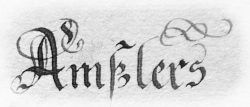Historical facts about the Boezen region
In his excellent village chronicle 1) the protestant pastor Hans Wassmer, who served in Boezen for 33 years, documents the history of the community of Boezen in great detail. The earliest settlers were the Celtic Helvetians. According to Wassmer, the name Boezen is of Celtic origin. The term “botia” means “stable”. However, there are also other interpretations regarding the origin of the name Boezen.
The Romans
As the Roman Empire expanded northwards, the Romans took control of the Boezen region for 400 years, until the beginning of the 4th century. The town of Augusta Raurica, 10 km east of Basel, and the Roman legionary camp of Vindonissa in today’s Windisch were strategically important for the Romans.
The main road between the Roman provinces of Gallia Belgica and Raetia led over the Boezberg, past the village of Boezen and connected Augusta Raurica with Vindonissa. The foundations of a Roman villa have been found in Boezen, further testimony of the roman presence. Excavations of both the roman road and the Roman villa were documented by Prof. Dr. Laur-Belart in 1922 and 1926.
The monastery of Murbach and Habsburg
In 727 the monastery Murbach was founded in Alsace. It acquired extensive property along strategic waterways and roads in todays northwest of Switzerland. In 1259 we find more detailed information about the rights to these properties 2). One of them is the “Dinghof Elfingen”, to which the three villages Elfingen, Effingen and Boezen belonged. A Dinghof was a farm estate where annual courts were held and from which taxes were collected. More than 750 years later, the borders of the three villages are still practically identical to the reconstructed 13th century circumference of the Dinghof!

The name Boezen is first mentioned in a document from 1284 in the Lucerne State Archive (document no. 696/14125). The main church was originally located in Elfingen. The Dinghof Elfingen was a fief of the monastery to the Habsburgs, before they purchased the farm estate from the monastery in 1291. The place of origin of the Habsburg family is also in Alsace. The Habsburg castle in Aargau was built later and in 1025 became the ancestral home of the family.
The famous Habsburg Land registry from 1305 is a detailed list of the actual and claimed rights of the Habsburgs. Mention is made of a tavern in Effingen (the Restaurant zur Glocke) and a mill in Boezen. The Registry describes the taxes that each of the three villages of the Dinghof Elfingen owed to its owners.
1) Hans Wassmer, Die Geschichte des Dorfes Bözen: «ze boze im deme dorfe», Brugg 1984.
2) Dr. Adolf Rohr, Die vier Murbacherhöfe Lunkhofen, Holderbank, Rein und Elfingen im Spätmittelalter, Argovia 1945
